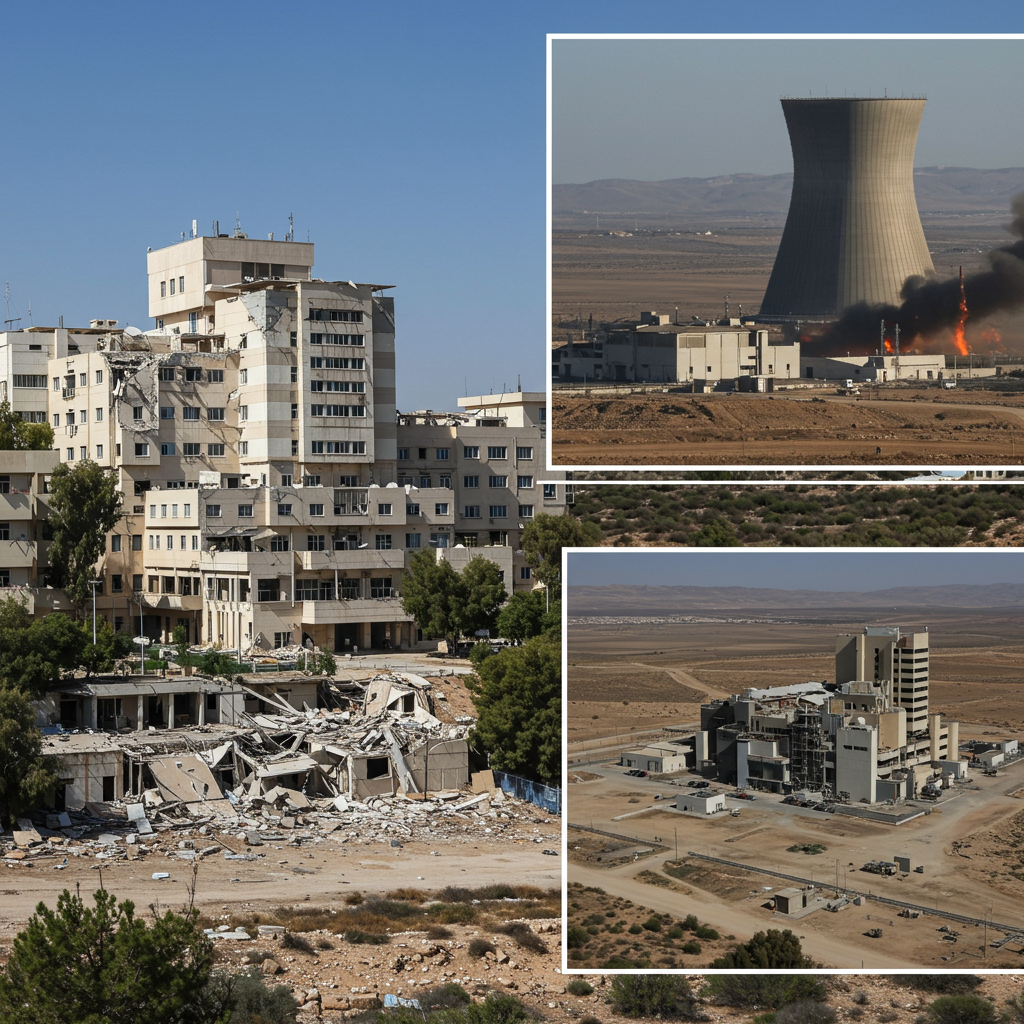Trump Approves Iran Attack Plans, Delays Final Order as Middle East Crisis Deepens
President Donald Trump has reportedly given approval for potential U.S. military actions against Iran but is holding back on issuing the final command for strikes. This significant development occurs as the conflict between Israel and Iran intensifies, reaching its seventh day, primarily driven by international concerns over Iran’s rapidly advancing nuclear program.
According to various reports, including details from a meeting in the White House Situation Room, the President approved the operational plans early in the week. However, the decision to delay execution appears intended to gauge whether Tehran might yield to U.S. demands, specifically to abandon its nuclear ambitions. Trump has repeatedly called for Iran to unconditionally surrender their nuclear program.
The President himself has publicly maintained an air of uncertainty regarding the final decision, stating, “I may do it, I may not do it.” He has suggested a decision could come very soon, describing the upcoming week as “very big.”
Potential Targets and Military Readiness
While a range of military options have been presented to the President, attention is heavily focused on Iran’s nuclear facilities. Sources indicate Trump is becoming comfortable with the idea of specifically targeting Iran’s underground Fordow enrichment plant. This facility, located deep inside a mountain and heavily protected by concrete, presents a significant challenge.
Experts suggest that successfully striking such a hardened target would likely require powerful munitions like the 30,000-pound GBU-57/B Massive Ordnance Penetrator (MOP), deliverable only by U.S. B-2 stealth bombers. However, reports also note some skepticism, with Trump reportedly unconvinced even the MOP would be fully effective against Fordow. Furthermore, Israel is said to lack the independent aerial capability to strike Iran’s deepest installations, potentially necessitating alternative, higher-risk methods if the U.S. holds back.
In anticipation of potential action, the U.S. military has already begun preparatory measures. This includes increasing its presence in the region, relocating tanker planes and fighter jets – including F-22 Raptors sent to Jordan – and positioning ships in the Mediterranean Sea to provide operational flexibility. Assets have also been moved from bases in countries like Qatar and Bahrain due to concerns about potential Iranian retaliation. U.S. military leadership, such as CENTCOM commander Gen. Michael Kurilla, has reportedly met with the President to present military options.
Iran’s Defiance and Escalating Conflict
Iran’s response to Trump’s demands has been defiant. Supreme Leader Ayatollah Ali Khamenei has publicly rejected calls for surrender, vowing to continue attacks against Israel and threatening intense “punitive operations.”
The conflict on the ground continues to escalate. Israel has issued fresh evacuation warnings, specifically targeting the area around Iran’s Arak heavy water reactor. Reports indicate Israel’s latest strikes have targeted various areas in Iran, including military sites and nuclear weapons development projects in Tehran. Meanwhile, Iran has fired new salvos of missiles at Israel, causing casualties and significant damage, including a reported strike on Soroka Medical Center in Beer Sheba.
So far, U.S. military involvement has been limited primarily to assisting Israel defensively, with American systems helping intercept some of the hundreds of missiles and drones launched by Iran. Despite the high volume of incoming fire, Israel reports a high interception rate, though some ballistic missiles have impacted urban areas, resulting in dozens of Israeli casualties. Reports suggest hundreds of Iranians have also been killed.
Amidst the military tensions, diplomatic channels remain open, with European powers reportedly planning nuclear talks with Iran, potentially involving the U.S.
Political Considerations and Opposition
The potential for direct U.S. military intervention is navigating a complex political landscape. Within the administration, reports suggest disagreement, with Director of National Intelligence Tulsi Gabbard reportedly opposing intervention by those she characterizes as “warmongers.”
On Capitol Hill, anti-war members of Congress are actively seeking legislative means to prevent an unauthorized U.S. attack. Efforts include resolutions co-led by Reps. Ro Khanna and Thomas Massie in the House and a measure introduced by Sen. Tim Kaine in the Senate, citing Congress’s constitutional power to declare war. However, top Democratic leadership has reportedly remained largely silent on the issue, and support for such resolutions is currently limited, despite recent polling indicating a majority of Americans oppose U.S. military action in Iran.
Despite previously criticizing predecessors for engaging in new wars, Trump is reportedly becoming more receptive to arguments for tougher military action from a small group of advisors and Republican senators.
The situation remains highly uncertain, with the threat of U.S. military action hanging in the balance as the President weighs his options and the conflict between Israel and Iran continues unabated.

